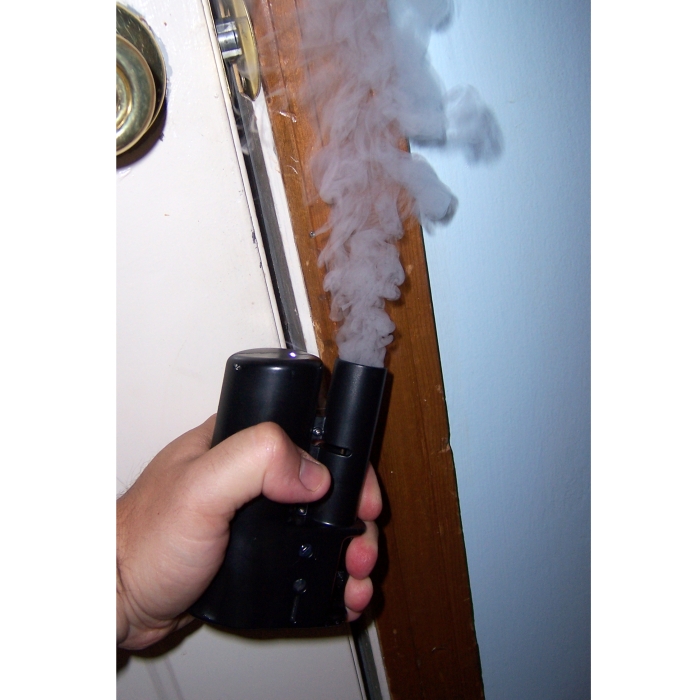In most homes, drafts and air leaks can be easily detected by placing your hand to a window or electrical outlet located on an exterior wall. Other air leaks, however, are not as easily detected. These hidden leaks are costing the average homeowner hundreds of dollars every year in heating and cooling. A smoke puffer provides a simple way to identify air leaks and drafty spots in the home that are not so easily detected.

Also referred to as a smoke pencil, a smoke puffer uses batteries and fluid to point out where air is leaking out of a building. Installing and using this tool can be done in a few simple steps:
- Lay the tool on its side and fill the tank with the smoke fluid.
- Gently hold the vapor/power trigger for 6-9 seconds, allowing the vapor to warm up.
- Once the LED power light glows, press the vapor/power lever more firmly.
- Use the trigger on the smoke puffer to control the amount of time the vapor is dispensed; increasing the pressure applied to the trigger increases the vapor stream.
- See how air is moving the smoke to discover where the most air is leaking out of the home.
In addition to ease of use, the smoke pencil is ideal for identifying air leaks for a number of reasons. It is lightweight and pocket-sized for easy storage. Also, the fluid contains harmless glycerin and water vapor, instead of toxic chemicals. As a result, it poses no threat to an individual using it, or others in the area. Discovering where air is leaking out of the home is the first step to reducing this type of energy loss as well as the amount of money it is costing every year.

There are many leaks in different parts of our house which are not visible to us. The method you mentioned here is unique. This makes it easier for us to detect leaks in the house. This method will be very useful for saving energy and will probably reduce the cost for our unwanted electric cost for hvac. Thanks